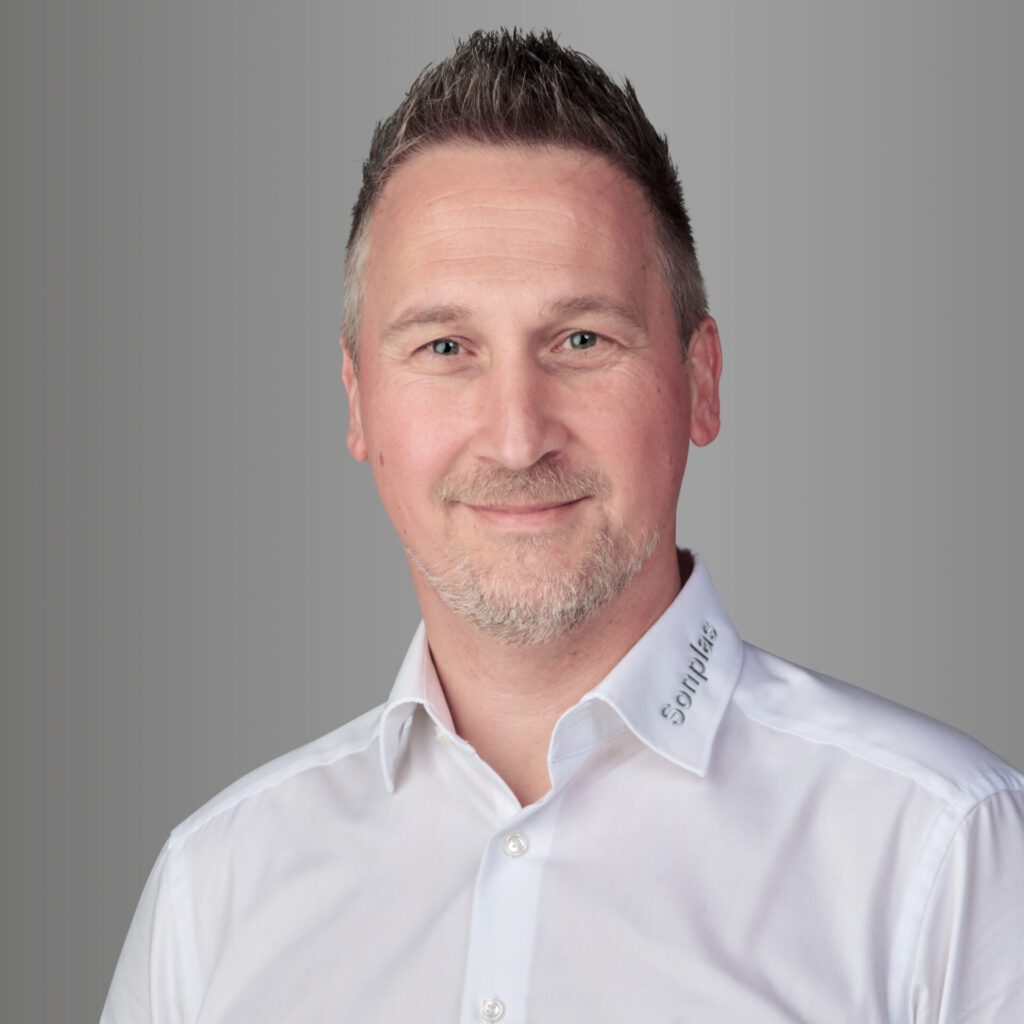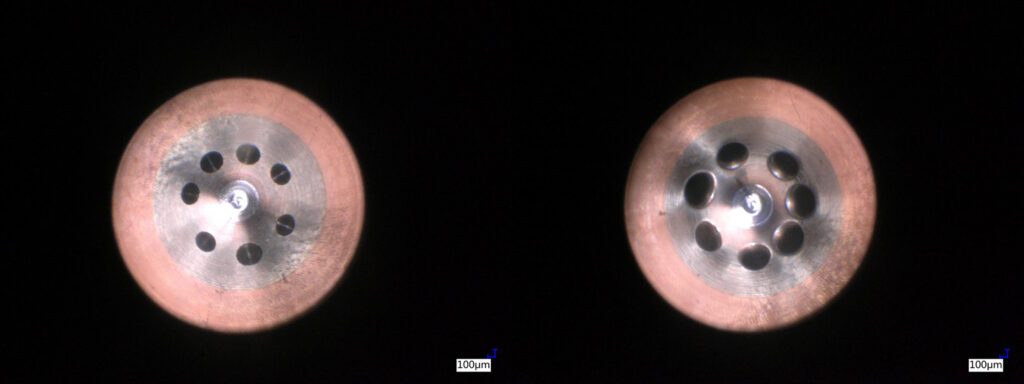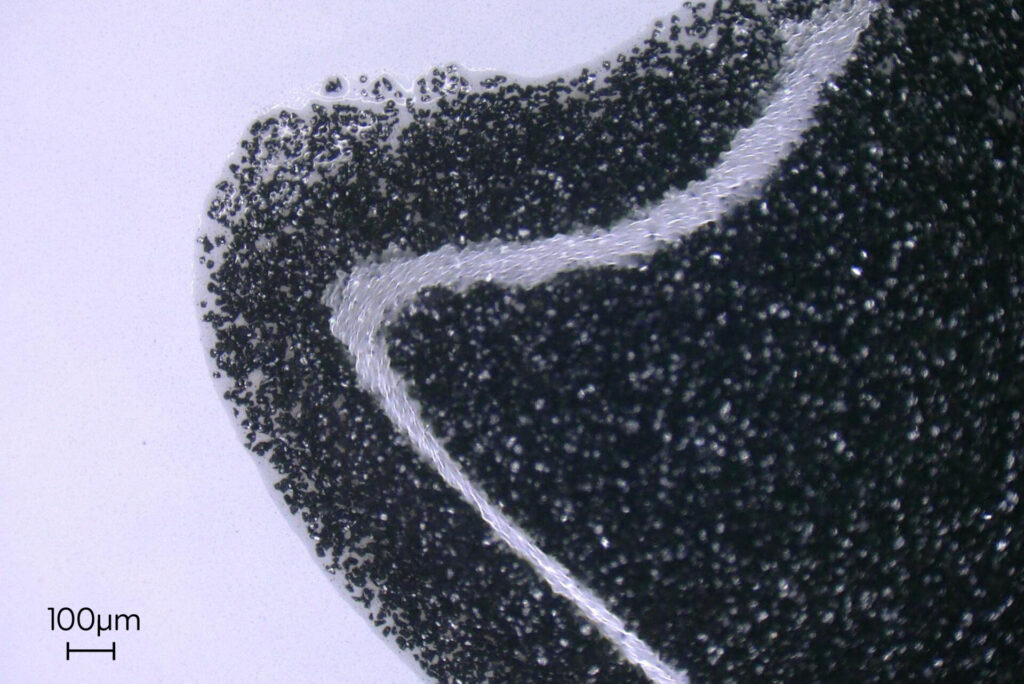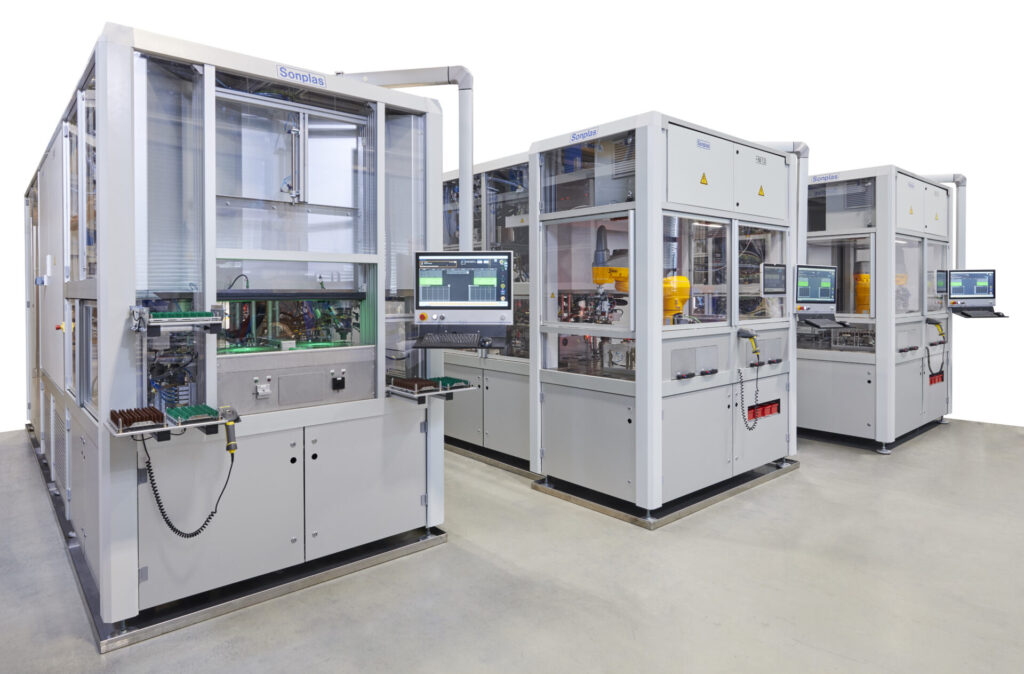Dosing units for liquid handling must have exceptionally smooth and burr-free surfaces to prevent any material from adhering during flow. Sonplas offers an efficient solution with its “HydroEROsive” processing – or HERO for short: An abrasive liquid mixed with grinding particles is pumped under high pressure through the internal geometry of the workpiece. This type of flow grinding can be used to deburr and round components or to calibrate the flow rate of a bore. Sonplas provides both extensive expertise and the appropriate system solutions.

Here, a fluid containing abrasive particles flows through the component along the internal bore intersections or bore geometry, very much in the same way that liquid sandpaper would. Werner Riederer provides an example: “Assume the bore has a diameter of two millimeters and merges into a bore with a diameter of one millimeter. At the bore taper there is an edge where the abrasive particles accumulate due to the high pressure. This causes erosion to occur. And that is dependent on how strong the pressure of the fluid is and which abrasive particles are used.”

Before – After: example of hydroerosive machining. Here, the injection holes of an injector made from a nickel-based alloy were rounded.
Flexibility in the choice of components
A very wide range of workpieces can be machined. The key factor is always the bore size that needs to be machined. With our systems, we can grind bores with diameters ranging from 0.1 to 5 millimeters,” says Werner Riederer. The workpieces can be made of steel or stainless steel, but aluminum, magnesium, and precious metals like gold, silver, or platinum are also suitable. Hard metals, such as those used for cutting plates in tools, as well as glass, ceramics, plastics, and fiber composites, are also possible.
Optimally tailored process medium

Safely calibrate the flow rate
In addition to rounding and deburring, the HERO process can also be used for flow calibration of bores – for example, in valve technology. For this purpose, the user selects a fluid with low viscosity. Werner Riederer: We place the component in our system, round off the inlet edges of the injection holes, and increase the flow rate by 10 to 40 percent.” After the HE process, the nozzle has a higher flow rate. It offers a significant advantage: after erosion, the accuracy of the bore is ±3 percent, whereas after the HERO process, it is a reliable ±1 percent. Hydroerosive machining therefore allows the user to calibrate the flow on their workpieces extremely accurately. The operator can continuously monitor the increasing flow rate online throughout the entire process, precisely adjust the required value and thus set the flow rate tolerances in a reliable and process-safe manner.
No matter whether it is deburring, rounding or calibrating, the user has three different application options at their disposal with hydroerosive machining. If they adjust the respective parameters, they can meet the different machining requirements reliably and in a reproducible way. “The method thereby fulfils all the drawing and component requirements,” explains Sonplas expert Riederer.
Customized systems

As the machines operate within a closed system, no operator errors can occur. The person at the machine only needs to handle manual loading or change the pallets if necessary – the process runs consistently. For higher production volumes, automatic loading is also possible, such as with a robot loading module. “This also allows us to interlink processes,” explains Werner Riederer. This means that the loading module can be placed after eroding or laser drilling and before HE machining. The customer then simply loads the workpiece and retrieves the drilled, deburred, or calibrated component at the other end, which is placed neatly on a pallet. “We provide our customers with everything from basic processing machines to high-volume production systems, tailored to their needs,” emphasizes Werner Riederer.
The HERO process is especially relevant for these sectors:
- Automotive industry
- Aerospace industry
- Chemical engineering
- Agriculture
- Medical technology
- Semiconductor industry
- Environmental technology
- Electrical industry
- Food industry
- Creative and design industries
- Maritime industry
- Mechanical engineering and metal processing
- Wind energy
And many other sectors. Don’t hesitate to get in touch with us.